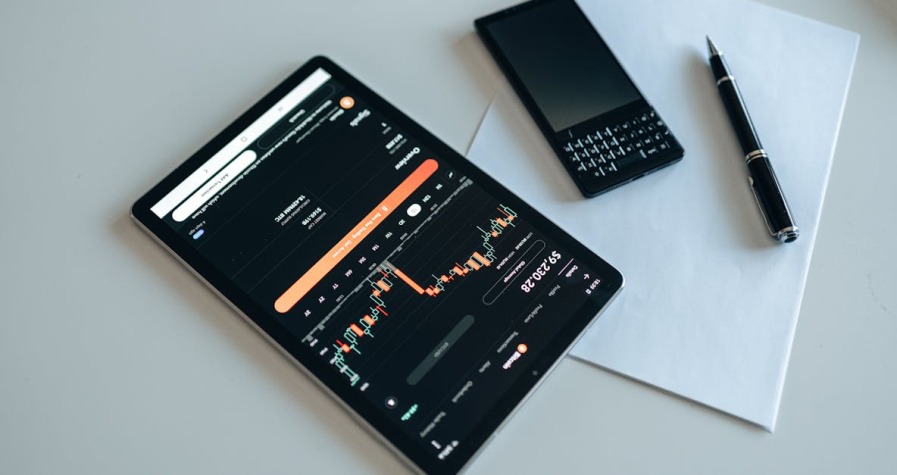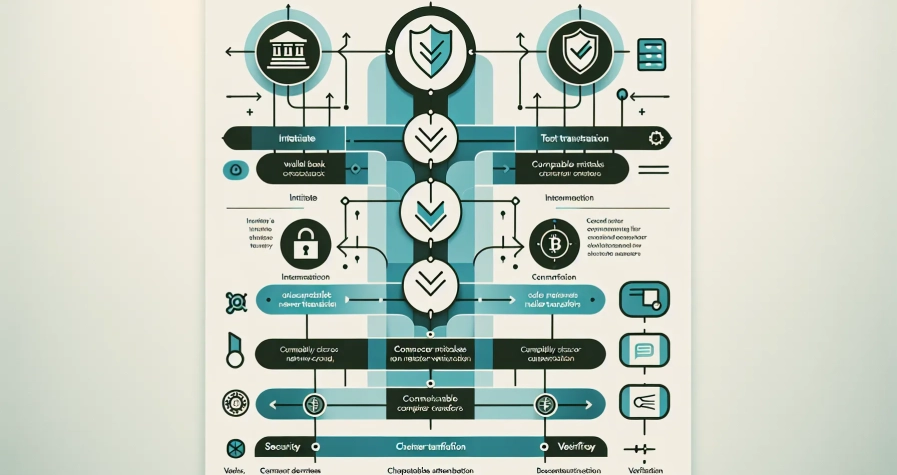Key Takeaways
- Bitcoin halving occurs every four years, automatically reducing mining rewards by 50% after every 210,000 blocks, creating predictable supply scarcity that distinguishes Bitcoin from traditional fiat currencies
- Historical halvings demonstrate strong price correlation, with significant bull runs following the 2012, 2016, and 2020 events, though the 2024 halving’s full impact remains to be seen
- Mining economics undergo major shifts during halvings, forcing less efficient operations to exit whilst strengthening the network through industry consolidation and technological advancement
- Supply reduction creates artificial scarcity, with Bitcoin’s hard cap of 21 million coins becoming increasingly scarce as issuance rates decrease systematically over time
- Long-term implications extend beyond price movements, establishing Bitcoin as a deflationary store of value with predictable monetary policy that contrasts sharply with inflationary fiat systems
- Future halvings will transition mining revenue from block rewards to transaction fees, fundamentally changing the economic model as Bitcoin approaches its final supply in 2140
Every four years, something extraordinary happens in the Bitcoin network that sends ripples through the entire cryptocurrency market. This event is called the Bitcoin halving, and it’s one of the most anticipated moments for investors, miners, and crypto enthusiasts worldwide.
The Bitcoin halving represents a fundamental shift in how new bitcoins are created and distributed. It’s a pre-programmed feature built into Bitcoin’s code that reduces the reward miners receive for validating transactions by exactly half. This mechanism directly impacts Bitcoin’s supply, making it increasingly scarce over time.
Understanding the halving isn’t just important for Bitcoin investors – it’s crucial for anyone wanting to grasp how cryptocurrencies work. The event affects everything from Bitcoin’s price movements to mining profitability, and it’s often cited as a key driver behind Bitcoin’s long-term value proposition. Let’s explore what makes this event so significant in the crypto world.
What Is the Bitcoin Halving?
The Bitcoin halving represents a pre-programmed event that cuts mining rewards in half approximately every four years. This mechanism directly controls Bitcoin’s supply issuance and maintains its deflationary monetary policy.
Understanding Bitcoin’s Block Reward System
Bitcoin’s block reward system compensates miners for validating transactions and securing the network through computational power. Miners receive newly minted bitcoins as payment for successfully adding blocks to the blockchain every 10 minutes on average.
The reward system operates on a decreasing scale that started at 50 bitcoins per block when Bitcoin launched in 2009. Miners compete to solve complex mathematical puzzles using specialised hardware called ASICs (Application-Specific Integrated Circuits). The first miner to solve the puzzle broadcasts the solution to the network and claims the block reward plus transaction fees.
Block rewards constitute the primary income source for mining operations worldwide. These rewards incentivise miners to maintain network security whilst simultaneously introducing new bitcoins into circulation. The system ensures consistent block production regardless of the number of miners participating in the network.
The Technical Mechanism Behind Halving
The halving mechanism operates through Bitcoin’s source code, which automatically triggers the reward reduction after every 210,000 blocks are mined. This occurs approximately every four years due to Bitcoin’s 10-minute block time target.
Bitcoin’s protocol contains hardcoded instructions that divide the current block reward by two once the predetermined block height is reached. The algorithm performs a bitwise right shift operation on the reward value, effectively halving the payout without requiring human intervention or network consensus.
| Halving Event | Date | Block Height | Reward Before | Reward After |
|---|---|---|---|---|
| 1st Halving | 28 November 2012 | 210,000 | 50 BTC | 25 BTC |
| 2nd Halving | 9 July 2016 | 420,000 | 25 BTC | 12.5 BTC |
| 3rd Halving | 11 May 2020 | 630,000 | 12.5 BTC | 6.25 BTC |
| 4th Halving | April 2024 (estimated) | 840,000 | 6.25 BTC | 3.125 BTC |
The halving continues until the block reward reaches zero, which occurs after 64 halving events when the total supply reaches 21 million bitcoins. This mathematical certainty ensures Bitcoin’s scarcity remains predictable and transparent to all network participants.
The History of Bitcoin Halvings
Bitcoin has experienced four halvings since its inception, each creating significant shifts in the cryptocurrency’s supply dynamics. These events demonstrate Bitcoin’s programmed scarcity mechanism in action across different market conditions.
First Halving: 2012
Bitcoin’s inaugural halving occurred on 28 November 2012 at block 210,000. Mining rewards dropped from the original 50 BTC to 25 BTC per block, representing Bitcoin’s first major supply reduction event.
This halving marked a crucial transition period for Bitcoin as it evolved from an experimental digital currency to a recognised store of value. The reduced block rewards preceded substantial price increases throughout 2013, establishing the pattern of post-halving bullish market cycles that investors continue to monitor today.
| Halving Event | Date | Block Number | Reward Before | Reward After |
|---|---|---|---|---|
| First | 28 November 2012 | 210,000 | 50 BTC | 25 BTC |
Second Halving: 2016
The second halving took place on 9 July 2016, further reducing mining rewards from 25 BTC to 12.5 BTC per block. This event occurred during a period of increasing institutional awareness and mainstream media coverage of cryptocurrencies.
Following this halving, Bitcoin experienced its most dramatic price surge to date in 2017, reaching nearly $20,000 per coin. The event demonstrated how supply constraints combined with growing demand could create significant upward price momentum, attracting millions of new investors to the cryptocurrency market.
| Halving Event | Date | Block Number | Reward Before | Reward After |
|---|---|---|---|---|
| Second | 9 July 2016 | 420,000 | 25 BTC | 12.5 BTC |
Third Halving: 2020
Bitcoin’s third halving occurred on 11 May 2020, reducing block rewards from 12.5 BTC to 6.25 BTC. This event took place during unprecedented global economic uncertainty caused by the COVID-19 pandemic and massive government stimulus programmes.
Despite challenging macroeconomic conditions, Bitcoin demonstrated remarkable resilience following this halving. The cryptocurrency reached new all-time highs above $60,000 in 2021, supported by institutional adoption from companies like Tesla and MicroStrategy. The 2020 halving reinforced Bitcoin’s reputation as a hedge against currency debasement and inflation concerns.
| Halving Event | Date | Block Number | Reward Before | Reward After |
|---|---|---|---|---|
| Third | 11 May 2020 | 630,000 | 12.5 BTC | 6.25 BTC |
Fourth Halving: 2024
The most recent halving occurred on 20 April 2024, reducing mining rewards to 3.125 BTC per block. This event represents another significant milestone in Bitcoin’s journey towards complete supply issuance, with approximately 656,250 bitcoins remaining to be mined.
The 2024 halving coincided with increased institutional interest and the approval of Bitcoin exchange-traded funds (ETFs) in major markets. Market participants continue to analyse how this supply reduction affects Bitcoin’s price dynamics alongside growing adoption and regulatory clarity in various jurisdictions.
| Halving Event | Date | Block Number | Reward Before | Reward After |
|---|---|---|---|---|
| Fourth | 20 April 2024 | 840,000 | 6.25 BTC | 3.125 BTC |
Why Does Bitcoin Halving Matter?
Bitcoin halving matters because it directly controls the supply of new bitcoins entering circulation and fundamentally impacts the economics of Bitcoin mining. This programmed scarcity mechanism distinguishes Bitcoin from traditional fiat currencies by creating predictable supply constraints.
Impact on Bitcoin Supply and Scarcity
Bitcoin halving reduces the rate of new bitcoin creation by 50% every four years, creating an artificial supply squeeze that reinforces scarcity. When halving events occur, the daily issuance of new bitcoins drops significantly, which means fewer bitcoins become available for trading if demand remains constant or increases.
This supply reduction creates a fundamental imbalance in the market dynamics. You observe Bitcoin’s total supply approaching its hard cap of 21 million coins at a decreasing rate, making each remaining bitcoin more scarce over time. Historical data shows that Bitcoin’s price has appreciated substantially following halving events, as seen after the May 2020 halving when Bitcoin reached new all-time highs in 2021.
The scarcity effect distinguishes Bitcoin from traditional currencies that governments can print without limits. Unlike fiat money systems where central banks control monetary policy, Bitcoin’s halving creates predictable and transparent supply restrictions that no single entity can manipulate.
Effects on Mining Economics
Mining economics undergo significant changes during halving events as miners receive 50% fewer bitcoin rewards for validating transactions and securing the network. This reduction in compensation creates immediate financial pressure on mining operations, particularly affecting miners with higher operational costs or outdated equipment.
Less efficient miners often exit the market following halvings, temporarily reducing the network’s overall hash rate. However, this adjustment period typically lasts only weeks as remaining miners benefit from reduced competition and the network’s difficulty adjustment algorithm rebalances mining profitability.
You can expect mining operations to become more optimised and professional over time as only the most efficient miners survive halving events. This evolution strengthens Bitcoin’s network security in the long term, despite short-term fluctuations in hash rate and mining participation.
The consolidation of mining power amongst efficient operators maintains Bitcoin’s decentralised security model whilst ensuring the network remains economically sustainable for professional mining businesses.
Bitcoin Halving and Price Movements
Bitcoin halvings consistently generate significant market attention due to their direct impact on price dynamics through supply reduction. Historical data demonstrates a clear correlation between halving events and subsequent bullish price movements.
Historical Price Patterns
You can observe remarkable price appreciation patterns following each Bitcoin halving event. The 2020 halving exemplifies this trend most dramatically, with Bitcoin’s price surging from approximately £7,040 in April 2020 to about £55,200 by November 2021.
Previous halvings exhibit similar exponential growth trajectories. Following the 2016 halving, Bitcoin’s price increased from around £450 to nearly £15,400 during the 2017 bull run. The 2012 halving triggered a rise from approximately £8 to £800 within 18 months.
The April 2024 halving reduced mining rewards from 6.25 BTC to 3.125 BTC. Initial post-halving price movements remained less dramatic, with Bitcoin trading within a £8,000 range around £50,400. This pattern suggests potential for delayed price rallies, as market forces require time to fully absorb supply reduction impacts.
| Halving Date | Pre-Halving Price (approx.) | Peak Price After Halving | Time to Peak |
|---|---|---|---|
| 28 Nov 2012 | £8 | £800 | 18 months |
| 9 July 2016 | £450 | £15,400 | 17 months |
| 11 May 2020 | £7,040 | £55,200 | 18 months |
| 20 Apr 2024 | £50,400 | TBD | TBD |
Market Speculation and Investor Behaviour
You witness intensified speculative activity surrounding each halving event as investors anticipate price increases from supply reduction. This behaviour creates self-reinforcing cycles where halving narratives drive increased trading volumes and price volatility.
Institutional adoption amplifies these speculative patterns. The 2024 halving coincided with Bitcoin ETF approvals and growing mainstream acceptance, creating additional demand pressures beyond traditional retail speculation. Large-scale investors now position themselves months before halvings, contributing to pre-event price appreciation.
Mining industry dynamics influence investor sentiment significantly. Post-halving periods often see less efficient miners exit the market, temporarily reducing network hash rates. However, this adjustment typically strengthens remaining operations and reinforces Bitcoin’s long-term security model, providing confidence for institutional investors.
Speculative narratives extend beyond simple supply-demand economics. Investors increasingly view halvings as validation of Bitcoin’s deflationary monetary policy, contrasting sharply with traditional fiat currency systems. This philosophical positioning attracts long-term holders who accumulate Bitcoin before and during halving cycles, creating sustained upward pressure on prices.
When Is the Next Bitcoin Halving?
The next Bitcoin halving occurs at block 840,000, with an estimated date of April 7, 2024. This event reduces the mining reward from 6.25 BTC to 3.125 BTC per block, marking the fourth halving in Bitcoin’s history.
Bitcoin’s halving schedule operates on a predictable timeline based on block production rather than calendar dates. Each halving happens after exactly 210,000 blocks are mined, which typically takes approximately four years given Bitcoin’s average block time of 10 minutes.
You can track the precise timing of future halvings by monitoring Bitcoin’s current block height. Mining difficulty adjustments ensure that blocks continue to be produced every 10 minutes on average, maintaining the four-year cycle despite fluctuations in network hash rate.
| Halving Event | Block Number | Estimated Date | Reward Change |
|---|---|---|---|
| 4th Halving | 840,000 | April 7, 2024 | 6.25 → 3.125 BTC |
| 5th Halving | 1,050,000 | ~2028 | 3.125 → 1.5625 BTC |
| 6th Halving | 1,260,000 | ~2032 | 1.5625 → 0.78125 BTC |
The halving mechanism continues automatically until Bitcoin reaches its maximum supply of 21 million coins, projected around 2140. After the final halving, miners earn revenue exclusively from transaction fees rather than block rewards.
Network participants can monitor countdown timers and block explorers to track progress towards the next halving. These tools provide real-time updates on blocks remaining and estimated time until the reward reduction takes effect.
Your preparation for halving events benefits from understanding their historical impact on market dynamics and mining operations. Previous halvings have consistently preceded significant price movements, making these dates particularly relevant for market participants and long-term Bitcoin holders.
Long-Term Implications for Bitcoin
Bitcoin halvings create fundamental changes that extend far beyond immediate price movements. These programmed supply reductions establish a deflationary framework that shapes Bitcoin’s entire economic trajectory over decades.
Future of Bitcoin Mining
Bitcoin halving events progressively reduce mining profitability as block rewards decrease from 6.25 BTC to 3.125 BTC and beyond. You’ll observe that less efficient mining operations exit the market after each halving, leading to industry consolidation where only the most advanced and cost-effective miners survive.
Mining revenue increasingly shifts towards transaction fees rather than block rewards as new bitcoin issuance diminishes. The network’s hash rate typically experiences temporary reductions immediately following halvings, but recovers as surviving miners benefit from reduced competition and implement more sophisticated mining technologies.
By 2140, when the final halving occurs and new bitcoin issuance stops completely, miners’ revenue will depend entirely on transaction fees. This transition creates economic pressure for higher transaction volumes and fee structures that maintain network security whilst ensuring mining operations remain profitable.
Technological advancement accelerates within the mining industry as operators optimise hardware efficiency and reduce energy consumption to maintain margins. Geographic distribution of mining operations continues evolving as miners relocate to regions with cheaper electricity and favourable regulatory environments.
Bitcoin’s Economic Model
Bitcoin’s halving mechanism enforces a predictable monetary policy that contrasts sharply with traditional fiat currencies subject to inflation and debasement. You benefit from a deflationary asset where supply growth rate decreases systematically, creating scarcity that supports long-term value appreciation.
The maximum supply cap of 21 million bitcoins remains immutable, establishing Bitcoin as a finite resource comparable to precious metals like gold. Supply issuance follows a predetermined schedule that market participants can calculate precisely, eliminating uncertainty about future monetary expansion.
| Supply Milestone | Timeline | Remaining Supply |
|---|---|---|
| Current Supply (2024) | After 4th halving | ~19.7 million BTC |
| 99% Mined | ~2032 | ~20.79 million BTC |
| Final Bitcoin | ~2140 | 21 million BTC |
Demand dynamics interact with decreasing supply to create potential price appreciation cycles that extend beyond individual halving events. Your understanding of this economic model reveals why Bitcoin functions as a store of value and hedge against currency debasement over extended periods.
Network effects strengthen as adoption increases whilst supply becomes increasingly scarce, reinforcing Bitcoin’s position as digital gold within the global financial system. The halvings ensure that Bitcoin’s monetary properties remain consistent and predictable, providing economic certainty that traditional currencies cannot match.
Conclusion
The Bitcoin halving represents one of the most fascinating aspects of cryptocurrency’s programmed economics. You’ve now seen how this automatic mechanism shapes Bitcoin’s scarcity and influences market dynamics over time.
Whether you’re a seasoned investor or new to cryptocurrency you can appreciate the elegance of Bitcoin’s design. The halving ensures predictable supply constraints while maintaining network security through economic incentives.
Your understanding of these cycles positions you better for future market movements. As Bitcoin continues evolving towards its final supply cap the halvings will remain pivotal events worth monitoring closely.
The next halving may be years away but its effects will ripple through the entire cryptocurrency ecosystem just as previous events have done.
Frequently Asked Questions
What is Bitcoin halving and why does it happen?
Bitcoin halving is a pre-programmed event that occurs approximately every four years, reducing the rewards miners receive for validating transactions by half. This mechanism is embedded in Bitcoin’s source code to control supply issuance and maintain its deflationary monetary policy, ensuring Bitcoin remains scarce with a maximum supply of 21 million coins.
When was the last Bitcoin halving and when is the next one?
The most recent Bitcoin halving occurred on 20 April 2024, reducing mining rewards from 6.25 BTC to 3.125 BTC per block. The next halving is projected to occur around 2028, following the predictable schedule of every 210,000 blocks mined, which typically translates to approximately four years.
How does Bitcoin halving affect the price?
Historical data shows Bitcoin’s price has appreciated substantially following halving events. The reduced supply of new bitcoins entering circulation creates scarcity, whilst market speculation and institutional positioning often drive price increases. However, price movements can vary, with some halvings showing immediate effects whilst others experience delayed rallies.
What happens to Bitcoin miners during halving?
Miners receive 50% fewer bitcoin rewards, creating financial pressure on mining operations. Less efficient miners may exit the market, temporarily reducing network hash rate. However, remaining miners benefit from reduced competition, and over time, operations become more optimised, strengthening Bitcoin’s network security and maintaining decentralisation.
How many Bitcoin halvings have occurred so far?
Four Bitcoin halvings have occurred since launch. The first was on 28 November 2012 (50 to 25 BTC), second on 9 July 2016 (25 to 12.5 BTC), third on 11 May 2020 (12.5 to 6.25 BTC), and fourth on 20 April 2024 (6.25 to 3.125 BTC).
Why is Bitcoin halving important for investors?
Bitcoin halving directly controls new supply entering circulation, creating predictable scarcity that distinguishes Bitcoin from traditional fiat currencies. This programmed supply reduction historically correlates with significant price appreciation, making halving events crucial for understanding Bitcoin’s long-term value proposition and investment potential.
When will all bitcoins be mined?
Bitcoin’s maximum supply of 21 million coins is expected to be reached around 2140. Halvings will continue approximately every four years until block rewards become negligible. By then, miners will rely entirely on transaction fees for revenue, maintaining network security through increased transaction volumes.









